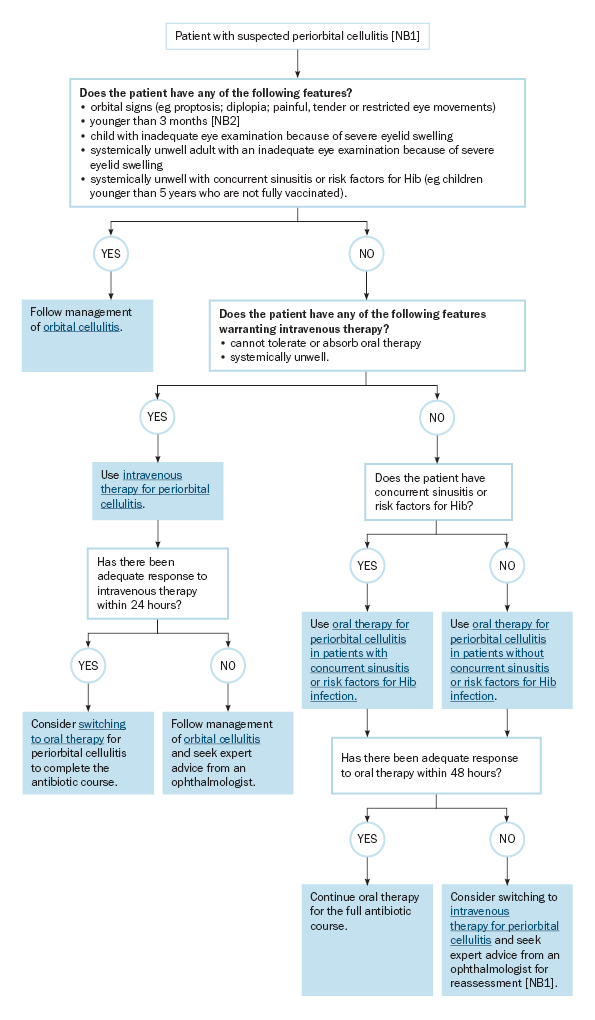Approach to managing periorbital (preseptal) cellulitis
Differentiating between periorbital (preseptal) and orbital (postseptal) cellulitis is important because orbital cellulitis is an emergency; see Distinguishing features of periorbital (preseptal) and orbital (postseptal) cellulitis.
Periorbital cellulitis is commonly caused by Staphylococcus aureus and Streptococcus species. Staphylococcal infection is more likely in patients with a local lesion such as dacryocystitis, or a chalazion, hordeolum or wound. Patients who are not fully vaccinated are at risk of Haemophilus influenzae type b (Hib). For patients with concurrent sinusitis, consider the involvement of other pathogens including oral anaerobes. Herpes simplex virus and varicella zoster virus are other potential causes.
Oral therapy with close clinical review is appropriate for most patients with periorbital cellulitis who are systemically well and who can tolerate and absorb oral therapy.
Consider intravenous therapy for periorbital cellulitis for patients who are systemically unwell if orbital cellulitis has been excluded, and for patients who are not improving or getting worse on oral therapy.
Patients with suspected periorbital cellulitis who require management as for orbital cellulitis include:
- children younger than 3 months; refer for assessment at a hospital with adequate expertise
- children with an inadequate eye examination because of severe eyelid swelling
- systemically unwell adults with inadequate eye examination because of severe eyelid swelling
- patients who are systemically unwell and have concurrent sinusitis or risk factors for Hib (eg children younger than 5 years who are not fully vaccinated).
For an algorithm to guide the therapeutic approach for patients with periorbital cellulitis, see Management of periorbital (preseptal) cellulitis.

Hib = Haemophilus influenzae type b
NB1: Differentiating between periorbital and orbital cellulitis is important because orbital cellulitis is an emergency. For features to distinguish between periorbital and orbital cellulitis see Distinguishing features of periorbital (preseptal) and orbital (postseptal) cellulitis.
NB2: Refer children younger than 3 months for assessment at a hospital with adequate expertise.
